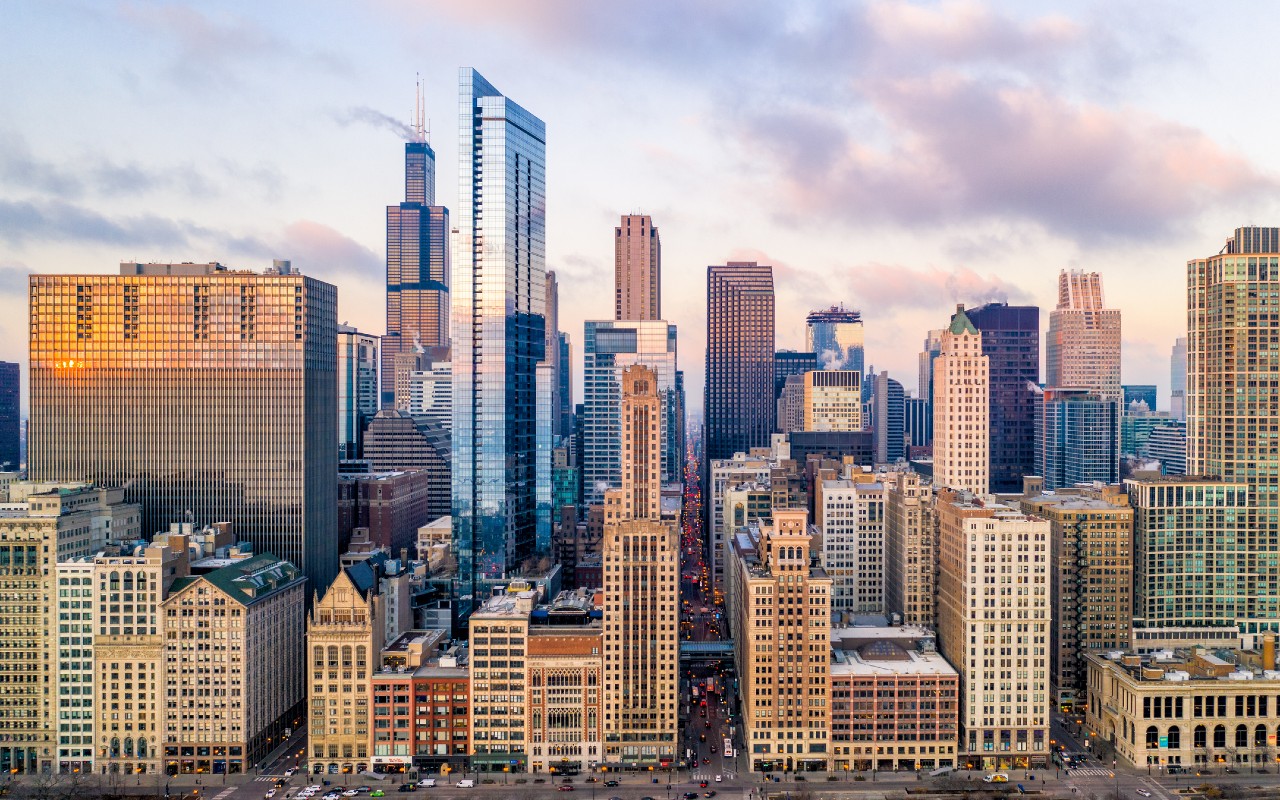After months of early sunsets, clocks will be "springing forward" in just a few hours as daylight saving time takes effect in Illinois and much of the continental U.S.
At 2 a.m. on Sunday, clocks will "spring forward" one hour, changing from 1:59 a.m. to 3 a.m. and leaving you with an hour less of sleep.
While the start of daylight saving time is unavoidable and you may already be dreading waking up Monday morning, there's thankfully a few things you can do to help yourself adjust.
From ways to help yourself acclimate to the time change to why we change our clocks twice a year in the first place, here's what you need to know about daylight saving time.
Feeling out of the loop? We'll catch you up on the Chicago news you need to know. Sign up for the weekly Chicago Catch-Up newsletter here.
What can you do to make the shift easier on your body?
AASM recommends the following tips for managing the time change:
- Get at least seven hours of sleep (for adults) or eight hours of sleep (for teens) per night before and after the time change.
- Gradually adjust your sleep and wake times. Shift your bedtime 15 to 20 minutes earlier each night for a few nights before the time change.
- Adjust other daily routines — such as mealtimes — to match your new schedule prior to the time change.
- Set your clocks ahead one hour on Saturday evening, March 13, and go to bed at your normal bedtime.
- Head outside for some sunlight on Sunday morning. The bright light will help set your body clock, which regulates the timing of sleep and alertness.
- Get plenty of sleep on Sunday night to ensure you’re rested and ready for the week ahead.
Rowley said some people may feel the need to nap on the day of the time change, but that can also pose challenges in your sleep schedule.
Local
What are signs your body is not properly adjusting?
According to some health experts, mood changes, fatigue and an inability to concentrate are some of the biggest indicators.
"Generally, what most of us feel is ... our sleep deprivation," Rowley said. "So we feel groggy, we feel sleepy, we feel tired, we may not think correctly."
Those symptoms can last for days.
"That usually then gets into the work week and the school week. Some people may not feel productive the first several days of the workweek, as well. So definitely a problem that extends several days," Rowley said.
When is daylight saving time?
Daylight saving time will resume on March 10, 2024, with the second Sunday in March marking the official date when clocks will spring forward. The clocks will officially shift at 2 a.m. CT that day.
By the time that date rolls around, the Chicago area will see nearly 12 hours of sunlight per day, with the spring equinox coming just days later.
The end of daylight saving time will occur on Nov. 3, 2024.
What is daylight saving time?
It's important to know the difference between the two times often debated: daylight saving time and standard time.
As it stands, Illinois shifts between the two. The "spring forward" is when the state enters daylight saving time, and the "fall back" marks a return to standard time.
According to the website Time and Date, standard time is the local time in a country or region when daylight saving time is not in use.
"More than 60% of the countries in the world use standard time all year," the site says. "The remaining countries use DST during the summer months, generally setting clocks forward one hour from standard time."
Daylight saving time is a changing of the clocks that typically begins in spring and ends in fall. Under the conditions of the Energy Policy Act of 2005, daylight saving time starts on the second Sunday in March and ends on the first Sunday in November. On those days, clocks either shift forward or backward one hour.
Why do we change the clocks every year?
Daylight saving time has been around for more than 100 years; it was originally established in 1918 to save energy costs during World War I, according to the Library of Congress. The law was repealed about a year later due to the war's end but implemented once again during World War II. It was instated to help conserve fuel and "promote national security and defense," and as a result, called "war time."
The law was repealed a second time, following the war's end, to allow states to establish their own standard time, the Library of Congress stated.
Daylight saving time later became standard in the U.S. until the passage of the Uniform Time Act of 1966, which mandated standard time across the country within established time zones.
Nearly every U.S. state observes daylight saving time, with the exceptions of Arizona (although some Native American tribes do observe DST in their territories) and Hawaii. U.S. territories, including Puerto Rico, American Samoa, Guam and the U.S. Virgin Islands, do not observe daylight saving time.
According to the AASM, it's standard time that more closely matches our body's internal clock.
"The daily cycle of natural light and darkness is the most powerful timing cue to synchronize our body’s internal clock," the Illinois-based organization says. "When we receive more light in the morning and darkness in the evening, our bodies and nature are better aligned, making it easier to wake up for our daily activities and easier to fall asleep at night. Daylight saving time disrupts our internal clock, leading to sleep loss and poor sleep quality, which in turn lead to negative health consequences."
"For morning commuters and children heading off to school, dark mornings caused by permanent daylight saving time pose numerous safety concerns," the AASM says. "This would be especially problematic during the winter months when days grow increasingly shorter."
Do experts prefer daylight saving time or standard time?
Sleep experts have long questioned the health of daylight saving time.
The American Academy of Sleep Medicine has pushed for a switch to permanent standard time for several years.
Dr. James Rowley, president of the American Academy of Sleep Medicine and a professor of medicine at Rush University, said the changing of clocks can actually have dramatic health impacts.
"We need to eliminate the changes twice a year. They only lead to problems with our sleep," he told NBC Chicago in an interview Tuesday. "The spring forward is particularly problematic because we all lose an hour of sleep and we think, 'Oh, an hour of sleep; that's not that bad,' but it actually can cause a lot of problems. There's clear evidence of increased motor vehicle accidents or heart events, mood disturbances in the days following the change of time."
A 2020 study found that fatal traffic accidents in the U.S. rose 6% in the week after daylight saving started. Other studies have found that the switch to daylight saving brings small increases in workplace injuries and medical errors in the days following the change. A 2019 study, meanwhile, found that the risk of heart attacks went up in the week after clocks sprung forward, though other research did not find such an increase.
The research overall is mixed, however.
The AASM's position is that a switch to permanent standard time would more align with our natural body clock.
"When we're on daylight saving time, we actually are probably reducing our sleep in a chronic fashion. We think that it's just happening at the beginning of the time change, but there is evidence that we get less sleep throughout daylight saving time, because having more sunshine in the evening means we go to bed later. And not having sunshine in the morning can sometimes mean that we also don't go to bed earlier," Rowley said. "So we strongly feel that it needs to be permanent standard time."
Rowley notes, however, that a switch to permanent standard time would mean earlier sunrise times during the summer months.
"We would argue that that's okay, because we need to get our days going. And it's okay to have sunshine in the morning. Sunshine in the morning actually helps us fall asleep at nighttime," he said. "And having a little less sunshine in the evening also helps us fall asleep better. So we don't think that it's much of a problem. What we really think is the problem is permanent daylight saving time. In the wintertime, there will be parts of the United States that sunshine does not happen until 9 or 9:30 in the morning. Kids will be walking to school in the dark on a regular basis throughout the winter."
Experts cited a "growing body of evidence" in recent years.
“Permanent standard time helps synchronize the body clock with the rising and setting of the sun,” Dr. James A. Rowley, president of the AASM, said in a release. “This natural synchrony is optimal for healthy sleep, and sleep is essential for health, mood, performance, and safety.”
"Light is the most powerful timing cue for the human body clock,” Erin Flynn-Evans, who has a doctorate in health and medical science and is director of the NASA Ames Research Center Fatigue Countermeasures Laboratory, said in a previous statement. “Shifting to permanent daylight saving time in the winter would result in more darkness in the morning and more light in the evening, leading to misalignment between the body’s daily rhythm and the timing of routine social obligations, like work or school. That has the potential to make it harder for most people to fall asleep at night, disrupting sleep quality and leading to sleep loss, which can negatively impact health and safety.”
The AASM stance also mirrors similar takes from other organizations, including the National Sleep Foundation, which said "seasonal time-changes are disruptive to sleep health and should be eliminated."
Proponents of daylight saving time have touted longer evenings, which some believe can play a role in the economy and tourism and could possibly even lead to more active lifestyles in some cases.



